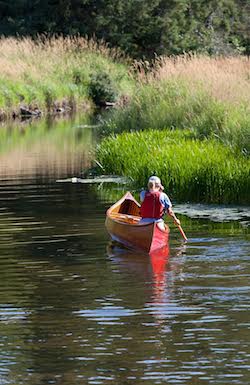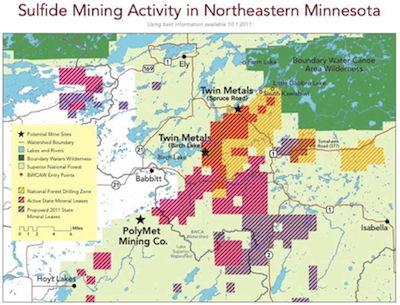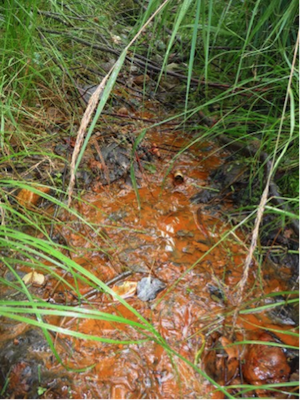Boundary Waters Canoe Area Wilderness
United States | Minnesota : Twin Metals

A National Treasure Threatened by Metal Sulfide Mining
The Boundary Waters Canoe Area is a unique wilderness area that covers over one million acres within the Superior National Forest in northeastern Minnesota. It contains over a thousand lakes and attracts more than a quarter million visitors each year, making it the most visited wilderness area in the United States. Visitors come to experience its remote wilderness character – its untouched forests and spectacular chain of freshwater lakes – through canoeing, camping, and fishing. It is even one of National Geographic’s 50 “Destinations of a Lifetime.”
The wilderness and surrounding area also provide key habitat to many wildlife species, such as gray wolves, lynx, moose, bald eagles and loons, and is a renowned fishery for lake trout, walleye, northern pike, and bass.
The area was set aside in 1926 to preserve its primitive character and made a part of the National Wilderness Preservation System in 1964. In 1978, the Boundary Waters Canoe Area Wilderness Act was passed to enhance public enjoyment of the unique landscape and wildlife.
The Boundary Waters is also protected for Native American cultural values and the use (hunting, fishing, and gathering rice).
It continues to offer visitors an unparalleled experience, allowing anyone to canoe, portage, and camp in the spirit of French Voyageurs of 200 years ago.
The Boundary Waters Wilderness is the economic engine for the region.
- The U.S. Forest Service has estimated that the Superior National Forest contributes $500 million to the regional economy each year, of which $100 million is attributed to the Boundary Waters.
- In 2009 alone, Northeastern Minnesota tourism provided 18,000 jobs and $800 million in sales.
- Tourism provided 12% of northeastern Minnesota jobs in 2012. Mining provided only 3.3%.
- In the area around Ely, MN – which is one of the entryways into the BWCA – canoe outfitters, resorts, dogsledders, and other wilderness-based businesses employ over a thousand workers.
The Threat of Sulfide Mining

Map by: Mining Truth, 2011
This unique ecosystem is now at risk from large-scale sulfide mining, with multiple proposed sulfide mines in the region. Multinational mining corporations plan to mine copper, nickel, and other metals from sulfide ores. The Twin Metals Mine, a copper-sulfide mine that would be the largest underground mine in Minnesota history, is proposed near Birch Lake, southeast of Ely, MN. This proposed mine is within the Superior National Forest and just three miles from the Boundary Waters, in the Kawishiwi watershed that feeds directly into the Wilderness Area.
In 2013, American Rivers listed the South Kawishiwi River and the Boundary Waters Canoe Area Wilderness among its 10 most endangered rivers, because of the threat of sulfide mining and the risk that mining would pose on wilderness character, drinking water, and local recreation-based economies.
The Impact of Sulfide Mining

Acid mine drainage from Spruce Road in Minnesota.
Photo: Friends of the Boundary Waters Wilderness.
In northern Minnesota, copper, nickel, and other metals are embedded in rock that contain sulfide. When sulfide minerals are exposed to air and water, they react to form sulfuric acid in a process known as acid mine drainage, which is highly toxic to fish and other aquatic life if uncontrolled. In 2010, acid mine drainage containing copper and arsenic had already been documented in a sulfide mining exploration site 15 miles southeast of Ely, MN near the South Kawishiwi River.
The proposed Twin Metals Mine poses a significant and persistent risk to water quality and, in turn, the economic and ecological health of the region. A University of Minnesota scientist, Lawrence A. Baker, Ph.D., has determined that, “the potential impacts of the proposed mine are high because this is a very large mine located in an ecologically sensitive area,” and “rivers and lakes in this region are poorly buffered, making them highly sensitive to acidic mine drainage (AMD).”
Strong Opposition to Sulfide Mining
Local businesses and citizens who have strong connections to the Boundary Waters and rely on revenue generated by tourism have voiced strong opposition to the proposed sulfide mines within the Superior National Forest.
Becky Rom, leader of Northeastern Minnesotans for Wilderness’ Boundary Waters Watershed Campaign gave her perspective on the proposed Twin Metals Mine.
“This is not just about one mine, or two. This is about the creation of an industrial corridor of mines, mills, roads, rail lines and all the rest at the edge of the Boundary Waters, and in some of the best loved places for outdoor recreation and wilderness experience across the national forest….We are talking about a massive, mining industrial complex that will last for hundreds of years. It is the gravest threat the Boundary Waters has ever faced." MINNPOST Feb 13, 2014
Jane and Steve Koschak, owners of River Point Resort & Outfitting Co. in Ely, Minnesota discussed the impact that mining would have on their local business with American Rivers in May 2013.
“Visitors do not come here to listen to the drone of drills and heavy equipment going on across the lake in an area considered “ground zero” for sulfide mining exploration.
“If mining commences, water pollution would threaten our businesses, including the dozens of resorts and canoe outfitters downstream from River Point, all the way to Voyageurs National Park and on to the Lake of the Woods. This 300 mile-long water rich recreational area from the South Kawishiwi River to the Manitoba border makes our region an eco-tourism treasure that must be preserved and protected from the toxic and destructive dangers of metallic sulfide mining. This is one of the world’s most special places, and as such, sulfide metal mining is totally incompatible with it.” American Rivers
Paul Schurke, co-owner of Wintergreen Dogsled Lodge with his wife Sue, said,
“the South Kawishiwi River and the many lakes it flows through, including the one our lodge is on, is the lifeblood of our region’s tourism economy. If metal sulfide mining pollutes the Kawishiwi watershed as it has 40 percent of the watersheds in the western U.S., it will devastate our community and damage the Boundary Waters, our nation’s most popular and beloved wilderness area.” Twin Cities Blog April 17, 2013
Canoe trip outfitter Steve Piragis, who owns Piragis Northwoods Company told InMinnesotaWater.org,
“We absolutely believe that this issue is of national importance. These companies say these new mines will be cleaner than the ones of the 1960s and ‘70s. But mining is mining. They’re still moving millions of tons of rock from underground to the surface, and that’s not a harmless activity.” InMinnesotaWater.org
David Lien Co-chair, Minnesota Backcountry Hunters & Anglers commented on the economic impact of sulfide mining in the region.
“We already know what the economic impacts will be. Eveleth is the size of Ely, and has Thunderbird mine within the boundaries of the city. The last year the state of Minnesota reported gross sales revenues, Eveleth was $41 million a year. Ely is $106 million a year. Eveleth relies on mining. Ely hasn’t had a mine since 1967. Ely’s economy, which is based fundamentally on the wilderness and a healthy national forest, would be displaced and replaced with what Eveleth has. Yes, sulfide mining would be bad for our economy.” Grand Rapids Herald Review; May 13, 2014
Protect the Boundary Waters
The Boundary Waters Canoe Area Wilderness is a national treasure and an internationally significant ecosystem. Earthworks has partnered with a local organization – Northeastern Minnesotans for Wilderness – and hope to secure lasting protection for the Boundary Waters by securing a 20-year mineral withdrawal for public lands within the watershed.
For more information:
- Sulfide Mining in Northeastern Minnesota. Northeastern Minnesotans for Wilderness.
- Friends of the Boundary Waters Wilderness
- Paddle to DC
- Twin Metals Mining and the Boundary Waters Canoe Area Wilderness, Risk Assessment for Underground Metals Mining. Tom Myers, Ph.D.
Tagged with: minnesota, mining, boundary waters
Follow Earthworks